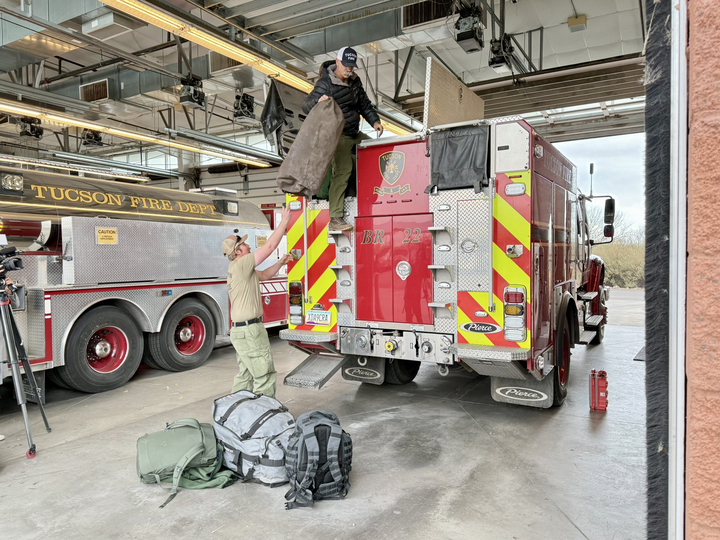The Solar Cats began as a small group of students working to get solar panels on their dorm. Now, they have broader goals.
Led by their adviser John Pollard, director of general chemistry and biochemistry, Solar Cats began in 2008 as six students — not even enough to be considered a club — who wanted to put solar panels on the roof of Posada San Pedro Residence Hall. Now the group is primarily student-led with their original aim closer to reality and their membership at about 20.
Solar Cats has expanded their aims to educate the community about sustainability and solar power and has been asked by the Honors College to create a sustainability mural and a solar-powered gazebo.
“”It’s grown a lot and the people who started out with it pretty much all of them are still with it, which for me is impressive because that means all of them felt that it was important enough, with their lives changing and school getting harder as they get older, they still made the time to participate in it,”” said Katherine Weingartner, Solar Cats president and public administration junior.
The Honors College mural will be on the back wall of the Slonaker House, which houses the UA Honors College, and will border a garden that the members of the college will be planting.
The Honors College has funding that will cover the price of the gazebo and Solar Cats will fund the lighting and solar panels.
The group attracts students from different majors, from an art minor who is designing the mural and the group’s logos to students who hope to go into green jobs one day.
“”I just kind of got caught up by the innovation,”” said Steven Henglefelt of his participation in Solar Cats. Henglefelt, a physiology junior, has been with the project since its inception and now manages the club’s recruitment and retention efforts.
“”This is a chance to be a part of something that has never been done before — panels get on the building, gazebo gets set up — that will be on campus long after we are there, so it’s like that legacy,”” Henglefelt said.
Kellie Goodlet, Solar Cats director of education and outreach and a microbiology senior, describes the reactions from the community as “”really warm.””
“”They want to see this solar energy happen,”” Goodlet said.
She has also been with the project from the beginning and describes the students’ drive as her motivation.
In addition to making the campus more sustainable, the dorm solar panel project will be used for research. The group is planning to have a monitoring system allowing students to measure the output of energy by the panels.
Goodlet says everyone was excited to research and it never felt like it wouldn’t happen.
“”Students here would be able to use that as a lab to gain hands-on experience about the industry,”” Weingartner said.
Weingartner said it is difficult to say how long it will be until the panels go up because engineering and cost estimates are still being compiled. Once the club finds out the amount, they plan to request funding through the Green Fund Committee.
According to Weingartner, university administration is excited about solar panels going on the dorm.
“”They want a student group to be involved,”” Weingartner said. “”I think that speaks very highly of our administration because not every college campus administration is so enthusiastic about students getting involved, or they say they are but they don’t necessarily do it. But I think U of A really makes sure that students have a say in it.””









